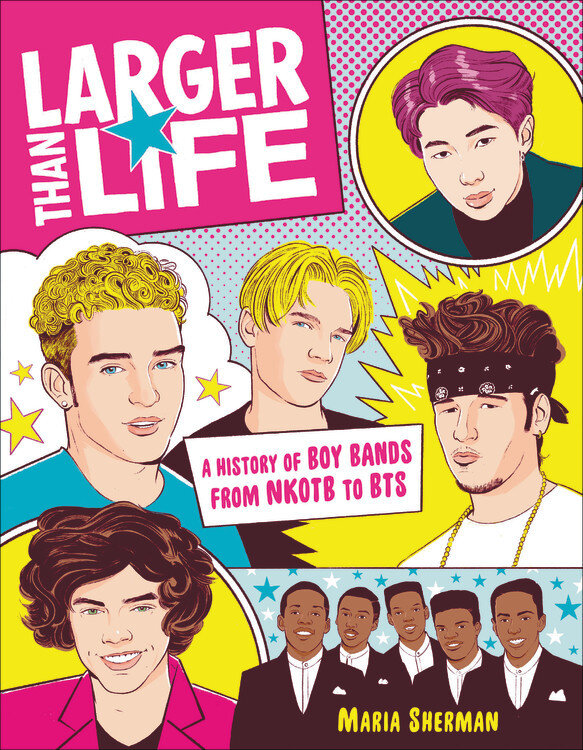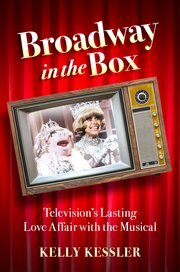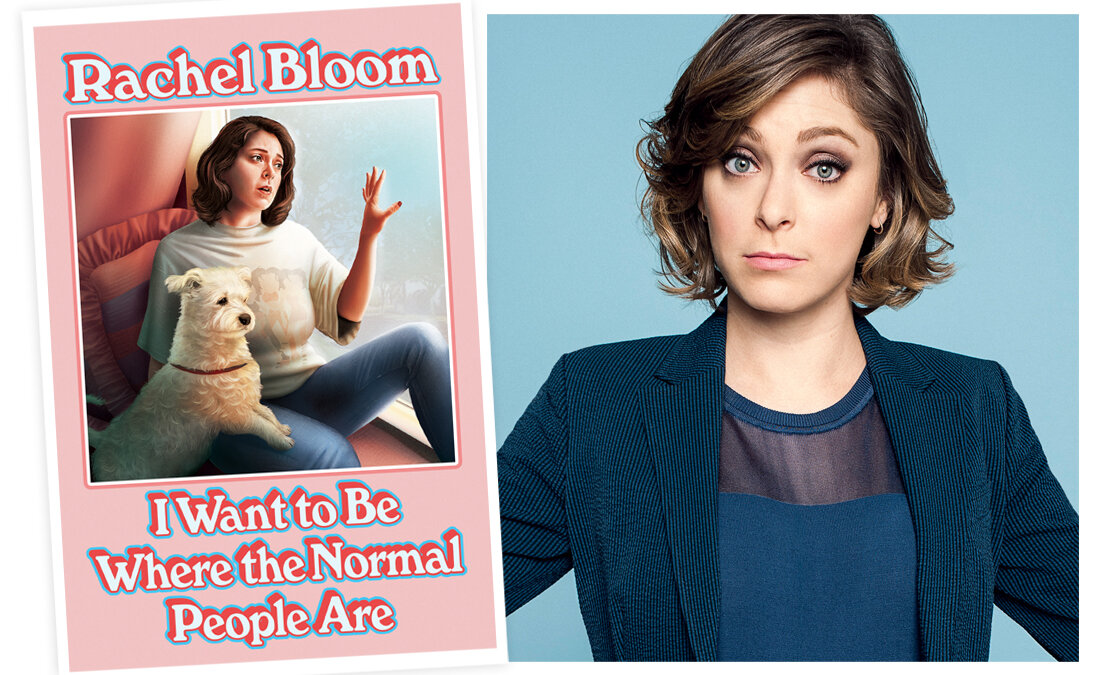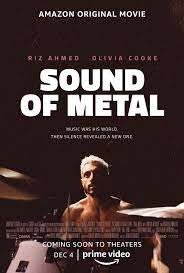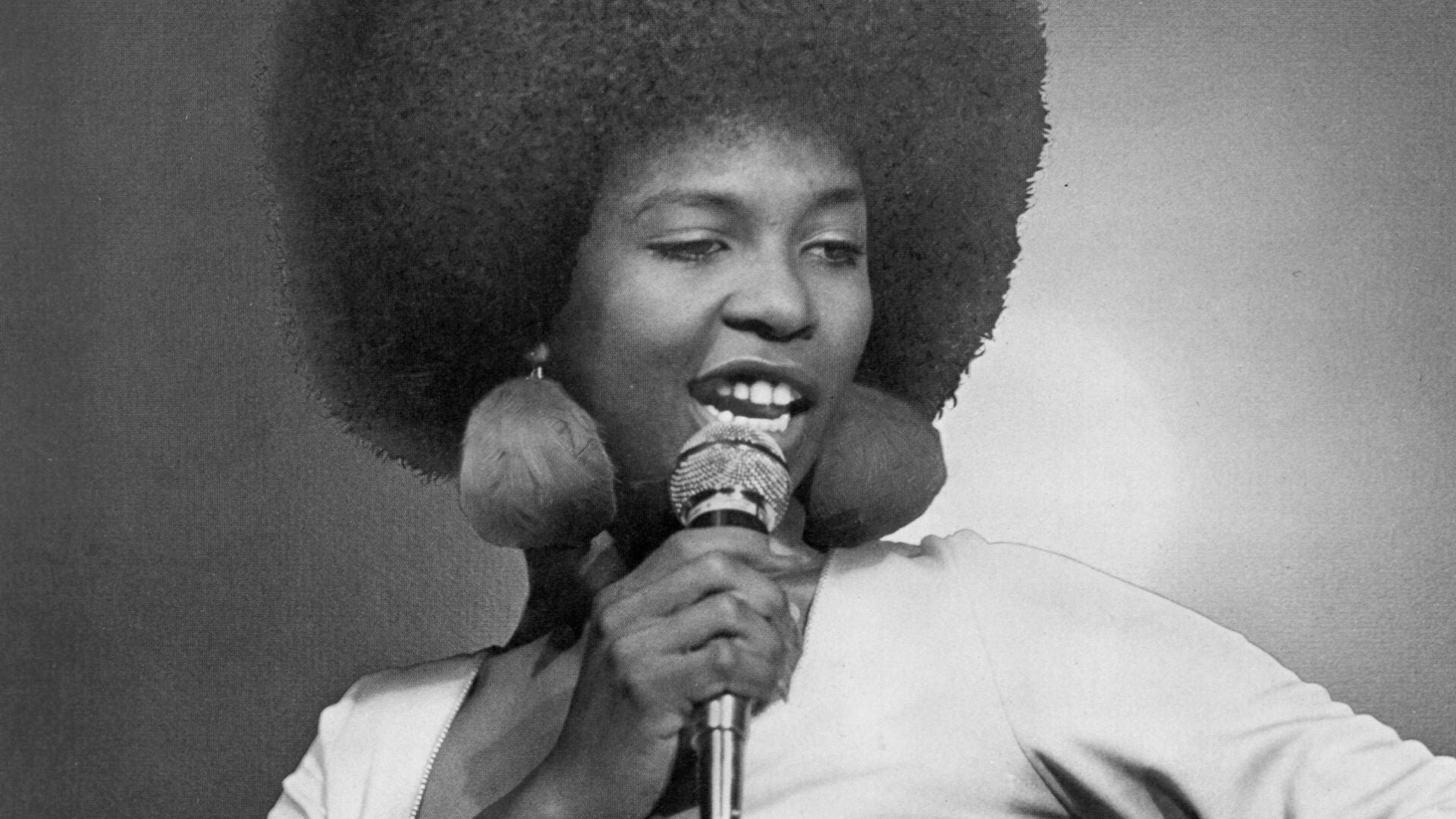Raves & Faves: The Best of 2020, a most unusual year
One of the steadying anchors of the fuckery of 2020 has been watching the CANVAS Arts series featured on the venerable PBS Newshour. Each week, various profiles of artists and arts workers remind us of the transcendent power of artistic and creative expression even during the most compromised times. The lights have gone out on Broadway; jazz is at a whimper in New Orleans; and silence fills movie theatres and concert venues nationwide. Many of artists who give us life struggle now more than ever to make a living. Beyond streaming services and well-funded cable and network programs, digital technologies have provided an outlet for some artists to connect more directly with their audiences. These are signs of life however modest.
2020 has amplified the unique way art offers solace, insight, and space to engage our humanity most fully. It is in that spirit that I share my reflections on the creative works that have impacted me most this past year.
MUSIC
Gaslighter (The Chicks)
Since their last album, 2006’s classic Taking the Long Way Home, The Chicks have extended the tradition of nominally “country” artists who eschewed genre tropes to make more intimate and idiosyncratic music. Emmylou Harris, Rosanne Cash, k.d. lang, Rodney Crowell, and Mary Chapin-Carpenter are among its devotees. All very good company. Many “Artists-Formerly-Known-as-Country” adapt more of a folk or rock sheen. On 2020’s Gaslighter The Chicks excel at a big anthemic pop sound without sounding like anyone else. In addition to the rock punch and throbbing textures their co-producers Jack Antonoff and Teddy Geiger inspire they shift their focus from Taking’s rebellion against repression to an even more personal topic: divorce. Lead singer Natalie Maines’s divorce from actor Adrian Pasdar flows through the set but what could have been indulgent or one-dimensional provides a captivating narrative thrust. Maines and bandmates Martie Maguire and Emily Strayer jeer at mendacity on “Gaslighter” (“you lie lie lie lie lie”); urge folks to organize (“March March”); and call out marital infidelity in searing terms (“Sleep at Night,” “Tights on a Boat”). Each song is a melodic, tightly constructed gem with clear-eyed lyrics. Some of the quieter moments are equally affecting: Lead singer Natalie Maines is not shy about wanting rebound sex (“Texas Man”). She’s confounded why “Everybody Loves You” despite her intimate knowledge of “You.” Most incisive is “Young Man,” a mother’s effort to free her sons from familial baggage (“You’re of me/Not mine”).
All Rise (Gregory Porter)
Since his 2010 debut Water Porter has steadily established himself as the most thrilling and unpredictable male singer in vocal jazz. Rather than relying on traditional standards or vocalese he has dedicated his career to writing idiosyncratic songs that continually add layers to his dynamic personality on albums like Be Good (2012) and Take Me to the Alley (2016). He is one of the leading artists expanding the scope of what constitutes contemporary jazz. More than a vocalist or a songwriter he is an embodiment, a kind of irrepressible presence. On All Rise he draws from gospel, 1970s soul R&B, and jazz to advance an epic musical sensibility. The result is a kind of secular gospel of love almost overwhelming in its emotional uplift. Whether saluting deep romanticism (“Faith in Love”), recognizing everyday kindness (“Mister Holland”), or extending an olive branch to social outcasts (“You Can Join My Band”) he is in full command of his robust baritone and blends effortlessly with sweeping yet tender choral arrangements.
Running on Faith (Diane Schuur)
67 years of living and nearly 40 years of album making informs Diane Schuur’s sense of the blues Running on Faith. Schuur, who sings, plays piano, and produces, brings a clear eyed intimacy and soulful sensibility to songs as disparate as Percy Mayfield’s “The Danger Zone” and The Beatles’s “Let It Be.” Unbound by genre Schuur and her band, including saxophonist Ernie Watts, trumpeter and flugelhorn player Kye Palmer, guitarist Thom Rotella, bassist Bruce Letters, and drummer Kendall Kay, explore life’s unexpected surprises with exuberance (Paul Simon’s “Something So Right”), drop some sage-like wisdom (“Everybody Looks Good at the Starting Line”), and offer power of hope in dark times (“The Sun Will Shine on You,” “This Bitter Earth”). She also summons the gospel on a soulful version of Carole King’s “Way Over Yonder” and a piano rendition of the spiritual “Swing Low Sweet Chariot.”
Gentleman (Curtis Stigers)
Curtis Stigers built an audience singing soft rock in the mid-1990s on pop hits such as “I Wonder Why,” and “You’re All that Matters.” Then, he abandoned lite FM and took a detour to vocal jazz in the 2000s. While his gravelly voice has traces of Mose Allison, Van Morrison, and Randy Newman he distinguished himself from other pop “defectors” on 2001’s Baby Plays Around where his taste in songs and improvisational chops took many people aback. Rather than dabbling he’s dedicated himself to jazz mostly through interpreting a mix of pre-rock and rock era songs. On 2020’s Gentleman he sings a series of personal, reflective original songs that showcase his personality more fully than ever. Most notable is the title track’s plea for male tenderness in an era of brash masculinity, a tongue-in-check personal admonition regarding his own wildness (“Lately I’ve Let things Slide”), a few laments to post-divorce solitude (“Learning to Let You Go”), and a witty take on COVID era isolation “Shut-Ins.”
Mr (Leslie Odom Jr.)
Though he is best known for his Tony-Award winning role as Aaron Burr in Hamilton and as a featured player on the NBC series Smash, Odom showcases his pop savvy on this delightfully eclectic collection of songs. Modern without sounding generic or anonymous he finds his own groove in varied, textured musical settings. Informed by swing jazz, contemporary R&B, and modern pop he sings about love, social justice, and the demands of everyday life in full command of his formidable vocal range. Whereas many musical theater artists struggle with pop music settings he is uncommonly versatile and appealing in his approach.
Album best suited to 2020: The Dream of You (Diana Krall): Krall is the most commercially successful jazz vocalist of the last 25 years, but she is more of an extender of pre-established styles than an innovator. Her mellow style, however, is an asset well-suited to the mood of 2020 via her performances of the downbeat but never depressing songs on this collection her last to be recorded with producer Tommy LiPuma in 2017. Great for staring out the window and drinking red wine or whiskey.
Radio single of the year: “Savage” (Remix): Megan Thee Stallion featuring Beyoncé: No pop song was catchier, funkier, more danceable, or wittier than this anthem.
BONUS: Outstanding Historical Recording + Documentary Film combo
Ella: The Lost Berlin Tapes (Ella Fitzgerald) + Ella Fitzgerald: Just One of Those Things (Directed by Leslie Woodhead)
24 years after her death the world continues catching up with the indefatigable artistry of Ella Fitzgerald. Fitzgerald’s flawless intonation, supple rhythmic approach, balanced readings of superior lyrics (e.g., Irving Berlin’s “Cheek to Cheek,” Jerome Kern and Dorothy Fields’s “I Won’t Dance”) and improvisational inventiveness shine through on this unreleased recording of 1962 performances recorded at Berlin Sportapalast. Though her musical finesse is nearly taken for granted one is elated at her casual playfulness such as the way she interpolates Frank Sinatra and Billy Eckstine into “My Kinda Boy,” and her sly joke that she “won’t twist” in “I Won’t Dance” an allusion to the Chubby Checker dance phenomenon which she comments on. By 1962 rock ‘n’ roll was dominating the commercial scene but transitioning. Teen idols and girl groups were gaining ground; the British had not yet “invaded,” surf music was on the verge of breaking through, and Motown was still a Detroit phenomenon. Fitzgerald, 26 years into her career, was one of the leading pre-rock singers who could still enrapture domestic and international audiences live and sell albums. What also makes this special is the inclusion of songs she rarely performed live such as jazz specialties like “Jersey Bounce,” “Hallelujah, I Love Him So” and torchy songs like “Cry Me a River” and “Angel Eyes.”
Fans enchanted by The Lost Berlin Tapes can continue their adoration viewing Director Leslie Woodhead’s 2019 documentary Ella Fitzgerald: Just One of Those Things produced in the U.K. and released stateside in 2020. The film takes a mostly linear approach to telling the singer’s ascent from an Apollo Theater hopeful to the premier interpreter of popular American standards via her triumphant Songbook series begun in 1956. In between the familiar milestones and live footage, are more intimate moments including previously unseen photos of her with her family, a radio recording of her commenting on racial politics in the 1960s, and discussions of her contributions to children’s charities. The film also features various commentators including cultural critic Margo Jefferson, music critic Will Friedwald, and singers such as Patti Austin who recorded a Fitzgerald tribute album in 2002. The film is streamable through various streaming services including virtual theaters.
Books About MUSIC
Maria Sherman’s Larger than Life: A History of Boy Bands from NKOTB to BTS (Black Dog & Leventhal) is an informative, cheeky delight written with the insider knowledge of a fan and the dexterity of a gifted critic. Sherman begins by surveying the boy band phenomenon before devoting individual chapters to key boy bands from the late 1980s of New Kids on the Block (NKOTB) to more recent phenoms such as London’s One Direction and South Korean heartthrob media stars BTS. As an avowed fan Sherman is an unusually witty, candid, and trustworthy narrator who grasps the music, fashion, and fan culture of these musical idols. She is also adept at mapping out an array of cultural nuances including the central influence of black harmony singing on boy bands and the ways boy bands have created spaces for more varied expressions of male gender expression. This combination makes Larger than Life an enjoyable history of contemporary popular culture even for those who’ve never found themselves singing the chorus to “I Want it That Way.”
In Broadway in the Box: Television’s Lasting Love Affair with the Musical (Oxford University Press) media scholar Kelly Kessler examines the different ways television has adapted Broadway musicals, and its aesthetic, to the small screen. Kessler, deftly traces the way network television embraced musical theater at a time when it was part of the country’s common culture. She also illustrates the ways both theater and television changed as cultural attitudes changed, evidenced by the ascent of rock music, the darker tone of 1970s era musicals (e.g., Sweeney Todd) and the ways 21st century television has mobilized social media to build audiences for musical series and televised versions of iconic musicals. In between these eras she touches on the prominence of Broadway figures on variety shows and specials, which grew increasingly inclusive of female performers in the 1960s, and the mix of theater and Vegas aesthetics on 1975-77 variety shows which she terms “BroadVegas.” Broadway in a Box is a rich, enjoyable cultural history that captures the different ways media forms have converged around the musical form well into the post-network era of the 21st century.
MUSIC on Film
Mr. SOUL! (Directed by Melissa Haizlip)
Though not strictly a musical program producer Ellis Haizlip’s 1968 New York based public television series Soul! showcased a formidable array of black musical, literary, dramatic, and choreographic talent during its innovative five year run. The documentary Mr. SOUL! (filed in 2018 but made more widely available in 2020), co-directed by his niece Melissa Haizlip with Samuel Pollard, chronicles his personal story as a talented enterprising bon vivant and his reluctant helming of the series. Though originally onboard as a producer only, he became its host, and was clearly beloved and respected by a generation of black artists. Emerging during a time when black activism and artistry overlapped Soul! disrupted mainstream TV norms by centering itself on the passions of black people. Some of the notable figures depicted in the documentary include Patti LaBelle & the Bluebelles, Nikki Giovanni, Al Green, Amiri Baraka, and The Last Poets. Others who appear include Toni Morrison, Louis Farrakhan, and Earth, Wind & Fire. The documentary illustrates how groundbreaking and challenging the series was during a time when the culture was forced to stretch itself beyond. It also charts the unfortunate demise of such bold programming by noting the increasingly restrictive public funding climate overseen by the Nixon era. Rather than fighting the decline Haizlip moved on to other passion projects, including work with the Schomburg Center, before his death in 1991.
Beyond MUSIC Media Favorites:
BOOKS
Fiction:
Leave the World Behind (Ecco)
Rumaan Alam
A white middle-class New York family’s “escape” to a rural AirBnB gets flipped when its older, affluent black owners arrive in response to an unidentified national crisis. Cable TV is scrambled, cell phones don’t work, and no one knows what the hell is happening. This chaos triggers an array of cultural scripts the families must navigate to survive.
Humor:
I Want to Be Where the Normal People Are (Grand Central Publishing)
Rachel Bloom
Bloom’s vibrant voice as co-showrunner, co-writer, and lead actress on Crazy-Ex Girlfriend booms in this charming mix of memoir, personal reflection, showbiz gossip, and fantasy essays.
Literary Criticism:
From Slave Cabins to the White House: Homemade Citizenship in African American Culture (University of Illinois Press)
Koritha Mitchell
Renowned literary and theater critic Mitchell analyzes an array of American literature and cultural representations of African-American women, spanning from Harriet Jacobs’s Incidents in the Life of a Slave Girl to the public persona of former first lady Michelle Obama. Her trenchant close readings capture the tension between the ways African-Americans have reached pinnacles of achievement and the dominant culture’s ongoing attempts to contain and marginalize these forms of progress.
Media Studies:
#HashtagActivism: Networks of Race and Gender Justice (The MIT Press)
Sarah J. Jackson, Moya Bailey, and Brooke Foucault Welles
The authors document and analyze the unique ways contemporary activists have employed social media technologies to build and sustain social justice movements responding to racial, sexual, and gender violence. The book provides equal attention to well-known (#MeToo) and less publicized (#GirlsLikeUs) hashtags advocating for justice.
Memoir:
Becoming a Man: The Story of a Transition (Simon & Schuster)
P. Carl
Carl’s ability to transcend a predictable, formulaic, or linear chronicle of his transgender identity makes this one of the more notable memoirs of the decade. He explores the paradoxical nature of his newfound white masculinity, the troubling gender dynamics of his working class family background, and the disruptive impact of his identity on his intimate relationship with a devastating balance of systematic analysis and personal candor.
Notable FILM Performances
While COVID-19 disrupted the ability io most people to access the unique magic of going to the movies many releases slated for theaters migrated to streaming platforms. Some of the more notable performances include the following:
Delroy Lindo in Da 5 Bloods
After a lengthy film career littered with fine performances Lindo delivers a titanic performance as Paula a bitter Vietnam veteran who embraces the aggression of the MAGA era. He leads the charge among a group of three former veterans, and his estranged son, in pursuit of the remains of their squad elder Stormin’ Normin (Chadwick Boseman) who died by accidental gunfire from Paul in the war, and a gold fortune buried near him. Paul is relentless in his quest to get the gold and assuage his longstanding guilt. In the process he alienates his son and fellow vets who struggle to contain his relentlessness. All are tested by a confrontation with gunmen that ends tragically for him. Lindo exudes a quiet authority throughout occasionally rising to stirring climaxes of oratorical passion and a final spiritual outcry delivered with authority and grace.
Radha Blank in 40-Year Old Version
Playwright, director, producer, and actress Radha Blank establishes herself as a fresh cinematic voice in her savvy film debut. Her character “Radha” is an artist of past renown struggling to get her newest play produced without sacrificing her integrity. Blank’s original screenplay keenly illustrates the compromises black artists often endure to get their work financed and “produced.” We also witness Blank delve into her psyche through an endearing rap, a romance with her youthful would-be rap producer D (Oswin Bejamin), and her complicated relationship with her brother, who shares in mourning the death of their mother, and her beloved agent/best friend/former boyfriend Archie (Peter Kim). Blank is the vibrant centerpiece capturing the vulnerabilities and frustrations of being single, broke, lonely, and nearing middle age yet fierce fighting to be heard and seen in your own voice authentically. The production of her play in the film’s final act takes a thrilling turn.
Paul Bettany in Uncle Frank
Alan Ball’s semi-autobiographical story places us firmly in the complex intimate life of Frank an NYU professor living a double life circa 1969-73 era. He is posited as an “eccentric” outcast who silently endures the casual disapproval of his domineering mean-spirited father (Stephen Root) when we first meet him at his family’s home in rural South Carolina. Flash forward to 1973, where he and a female friend play “straight” for his visiting relatives, and we see the truer Frank in his element. Openly gay dashing, urbane, and outgoing he and his partner thrive among his cadre of hip friends. His niece Beth (Sophia Lillis) a student at NYU, surprises him with a visit and discovers his relationship which she accepts. Before she fully processes it all they are both summoned back home for his father’s funeral, when his partner Wally (Peter Macdissi) unexpectedly joins them enroute. The oppressively homophobic tenure of the times come across clearly on their road trip, and an array of secrets emerge through various confrontations and flashbacks related to the funeral. In between these somewhat formulaic plot points Bettany conveys the torment of repression and self-hatred and mostly earns his transition toward wholeness.
Riz Ahmed in The Sound of Metal
Is Ruben Stone (Riz Ahmed), a drummer in a heavy metal band with his girlfriend “Lou” (Olivia Cooke) who experiences a severe hearing loss a musician whose life is undone by deafness, which exacerbates his status as a recovering heroin addict? A recovering addict struggling with his past whose career happens to be disrupted by near deafness? A newly deaf man whose career and navigation with addiction will be cured if he can restore his hearing? Director and screenwriter Darius Marder’s script informs Ahmed’s layered performance which blurs these boundaries and constantly points us to the lack of easy solutions. Can a functional life disintegrate so easily? Ahmed anchors nearly every scene—from playing live to adapting to a deaf recovery group to learning sign language among elementary school children. His mix of bravado, rage, and vulnerability capture the essence of uncertainty.
Julia Garner in The Assistant
This darkly lit, claustrophobically shot film is a much a horror story as it is an indie drama. Heard but not seen, the impact of the monster at its center, an aggressive, sexually exploitative film executive (played by Tony Torn) is experienced indirectly amplifying the latent aura of terror. The recipient of his wrath is a recently hired assistant Jane, played forlornly by Julia Garner, best known for her Emmy winning performance in Ozark. She dutifully does her job—including an array of ritualized menial tasks—without praise or gratitude, and also endures ongoing slights from her boss’s angry ex-wife, from barely sympathetic co-workers, and most strikingly through degrading phone messages and emails from her boss. Jane is constantly forced to apologize for not responding “properly” to unorthodox and inappropriate circumstances. This humiliation reaches its apex in a demoralizing scene with an HR rep who casually dismisses her complaint about her boss’s toxic sexual misconduct, minimizes her concerns, and then violates her privacy by informing her boss behind her back. By the film’s end her aspirations to become a producer, which she is advised will require her to tolerate emotional abuse and impropriety, thwarts her idealistic view.
Music on TV
One of my discoveries during the non-stop pandemic stream is the brilliant animated series Big Mouth (2017-present) on Netflix. The creation of actor and comedian Nick Kroll with producers Andrew Goldberg, Mark Levin, and Jennifer Flackett, the series centers on the lives of teenagers Andrew Glouberman (voiced by John Mulaney) and Nick Birch (voiced by Kroll), and their gaggle for friends and classmates in the suburbs of New York. As one would expect the sexual mischief, physical awkwardness, and embarrassing mishaps integral to adolescence define their existence. The show also features genuine insights about female sexuality, queerness, toxic masculinity, and family dynamics. Helping them along are “hormone monsters” who advise the students—for better or worse—siblings, parents, various school officials, and the ghost of Duke Ellington (don’t ask!).
Music is a key ingredient of its most surreal moments. Like The Simpsons it excels at song parodies and pastiches. Some of its most inspired musical moments include the following:
· Andrew and Freddie Mercury’s duet (“Totally Gay”)
· Man-child Coach Steve’s sexual awakening anthem (“Sex on a Lady”)
· Nick and classmate Jessi’s angsty folkie duet “Why does nobody get (How great I am?)”
· Music from a completely inappropriate adaptation of the movie Disclosure (!)
· A cast sing along about the loneliness of Valentine’s Day (“Valentine’s Day”)
These highlights are featured on Super Songs Of Big Mouth Vol. 1 (Music from the Netflix Original Series)
Notable musician deaths (A selective list):
Adam Schlesinger
Betty Wright
Bill Withers
Bonnie Pointer
Charlie Daniels
Eddie Van Halen
Freddy Cole
Helen Reddy
Joe Diffie
John Prine
Johnny Nash
Kenny Rogers
Little Richard
Mac Davis
Manu DiBango
Spencer Davis
Toots Hibbert
Trini Lopez
COPYRIGHT © 2020 VINCENT L. STEPHENS. ALL RIGHTS RESERVED.







